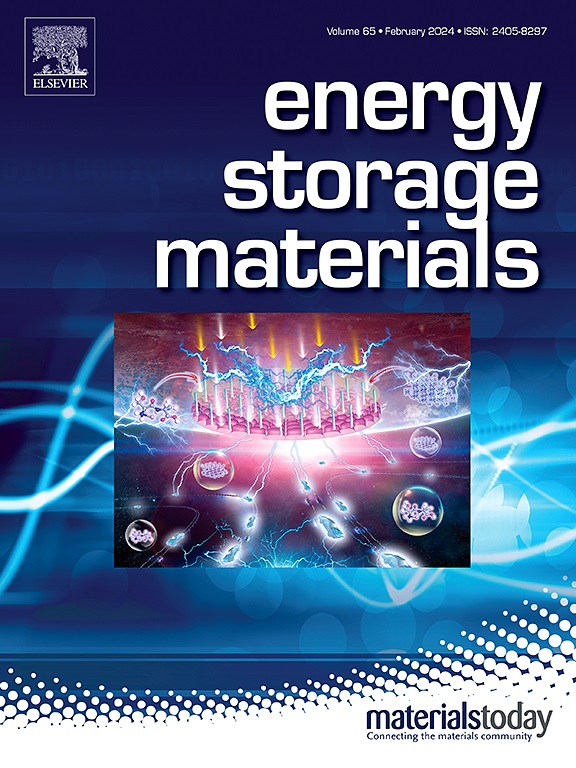Delithiation Coupling with Surface Reconstruction during Capacity Degradation in Ni-Rich Layered Cathodes
IF 18.9
1区 材料科学
Q1 CHEMISTRY, PHYSICAL
引用次数: 0
Abstract
Surface reconstruction and mechanical failure play key roles in the capacity loss of Ni-rich cathodes, yet their intertwining influences are still not completely elucidated. Herein, this work deconvolutes the primary-secondary relationships between surface reconstruction and mechanical failure in affecting capacity decay for LiNixCoyMn1-x-yO2 (NCM) cathodes. Electrochemical performance tests show that two Ni-rich cathodes with different nickel contents including LiNi0.6Co0.2Mn0.2O2 (NCM622) and LiNi0.9Co0.05Mn0.05O2 (NCM9055) in the same delithiation state exhibit similar initial discharge specific capacities and capacity retentions after cycling, which unveils that capacity decay is directly related to the degree of delithiation. In contrast to NCM622, the deep delithiation triggers the typical H2-H3 phase transition of NCM9055, leading to higher internal strain and more severe mechanical degradation during the similar capacity fading process. Such discrepancies in structural degradations disclose that the H2-H3 phase transition and the intergranular cracking cannot be the primary causes for capacity degradation. Impressively, the resemblance in surface reconstruction evolution for two cathodes after cycling further reveals that the capacity fading is strongly dependent on the reconstruction evolving properties of the cathode particle surface layer. This work offers valuable insights and further understanding of electrochemical performance degradation, which serve to facilitate Ni-rich cathode material design improvements.求助全文
约1分钟内获得全文
求助全文
来源期刊

Energy Storage Materials
Materials Science-General Materials Science
CiteScore
33.00
自引率
5.90%
发文量
652
审稿时长
27 days
期刊介绍:
Energy Storage Materials is a global interdisciplinary journal dedicated to sharing scientific and technological advancements in materials and devices for advanced energy storage and related energy conversion, such as in metal-O2 batteries. The journal features comprehensive research articles, including full papers and short communications, as well as authoritative feature articles and reviews by leading experts in the field.
Energy Storage Materials covers a wide range of topics, including the synthesis, fabrication, structure, properties, performance, and technological applications of energy storage materials. Additionally, the journal explores strategies, policies, and developments in the field of energy storage materials and devices for sustainable energy.
Published papers are selected based on their scientific and technological significance, their ability to provide valuable new knowledge, and their relevance to the international research community.
 求助内容:
求助内容: 应助结果提醒方式:
应助结果提醒方式:


